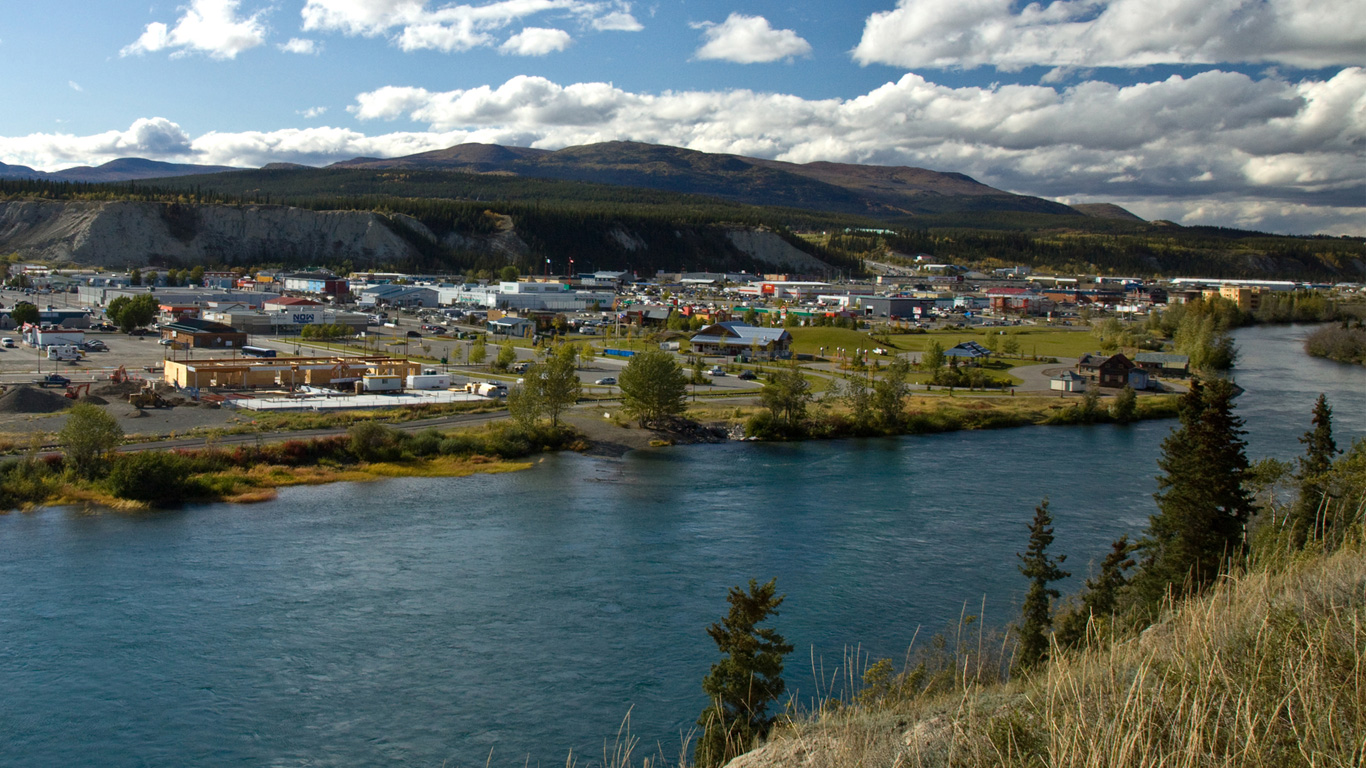
From 1896 to 1899, approximately 100,000 fortune seekers from around the world set off for the Klondike Gold Rush, heading to what we now call Yukon.
Approximately one in three prospectors actually reached the Klondike and its largest city, Dawson City, which swelled to a population of 16,000 to 17,000 people at the height of gold fever. Many of these people lived in tents or crude shacks.
Yukon was home to 27,219 people in 1901, the first time we counted during a census, with 9,142 of them living in Dawson City. A decade later, the population of Yukon had declined by two-thirds and continued to decline until hitting an all-time low of 4,157 people in 1921.
Starting in the early 1940s, and continuing through to the early 1990s, people again returned to Yukon. Many came to live in Whitehorse, with its population more than tripling from 754 in 1941 to 2,594 a decade later. In 1953, Whitehorse became the new capital of Yukon, replacing Dawson City.
Others came to live and work in newly built towns close to the mines that had opened in the region over this period. For example, the population in the area around the Faro lead and zinc mine grew from zero in 1966 to 1,652 people in 1981. In the mid-1970s, the Faro mine alone contributed approximately one-fifth of Yukon’s total economy.
From 1981 to 1990, almost one-fifth (19.9%) of the new homes built in Yukon were made to house workers and their families in “mining towns,” such as Carmacks, Faro, Mayo, Ross River, Tagish and Watson Lake.
Many of the mines built during the second half of the 20th century are now closed, but the towns remain, albeit generally smaller. In May 2021, for example, 440 people were living in Faro, down by over two-thirds from 40 years earlier, but up 26.4% from 5 years earlier, making it the second fastest growing town in Yukon.
In the wake of the mine closures, the population of Yukon declined 6.8% from 1996 to 2001.
Although Yukon is not nearly as colourful, dramatic or publicized as it was during the 1896 gold rush, 4,358, or 12.1%, more people were living in Yukon in 2021 than in 2016, for a total population of 40,232 people. The pace of growth was more than twice that of Canada (+5.2%) and was the fastest pace of growth for the territory since the 1991 Census.
This rush was not based on nearby gold or minerals but on the territory’s largest city and capital, Whitehorse, which grew 12.4% from five years earlier to 28,201 people in the spring of 2021.
There were 1,266 more dwellings built over this five-year period to house the additional 3,116 inhabitants.
Dawson City remained Yukon’s second-largest city, at 1,577 people in 2021, up 14.7% from five years earlier, but down 83.0% since our first census 120 years ago.
Contact information
For more information, contact the Statistical Information Service (toll-free 1-800-263-1136; 514-283-8300; infostats@statcan.gc.ca) or Media Relations (statcan.mediahotline-ligneinfomedias.statcan@statcan.gc.ca).
